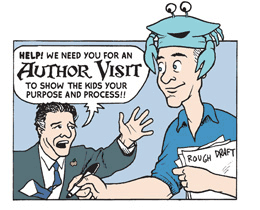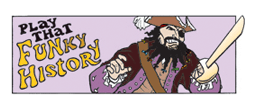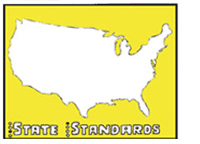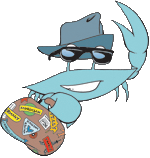












|
|

|
 |
||
 |
"My favorite is American Symbols. I like how you show what the Statue of Liberty stands for." Bennett, South Carolina fifth-grader |
|
|
|
||
The First Americans
Chester the Crab meets the first people to live in North America. He traces the cultures of the Anasazi and Pueblo in the Southwest, the Nootka and Kwakiutl in the Northwest, the Plains Indians in the Midwest, the Mound Builders in the Mississippi and Ohio river valleys and the Iroquois in the East – and their clash with European settlers and explorers! This funny, colorful graphic novel will excite reluctant readers, prepare students for standardized tests in history and help homeschooling parents!
Sources: Cobblestone magazine, June 1992; 500 Nations by Alvin Josephy Jr. ,1995; Cobblestone magazine, Nov. 1985; Britannica.com
Comic sample page #1: How many did Powhatan rule?
Comic sample page #2: How did Kwakiutls make totem poles?
Topics covered in this comic book
Teacher Guide
Some of the people who crossed the Bering land bridge settle in what is now the American Southwest. They find a way to survive in this dry and hot climate. They build pueblo homes out of the clay ground and grow food by moving water to the fields. To them, gold is the corn they harvest. In the 1500s, the Spanish come looking for a different kind of gold . . .
The Pueblo Revolt includes the following topics:
Which Indians dwelled in the cliffs?
How did Pueblo Indians live?
How did Pueblos meet the Spanish?
Why did Pueblos fight the Spanish?
Who led the 1680 Pueblo Revolt?
Did Spaniards retake New Mexico?
Who Roamed the Great Plains?
Sources: 500 Nations by Alvin Josephy Jr., 1995; The Rain Dance People by Richard Erdoes, 1976; The Pueblo by Raymond Bial, 1999; Grolier Encyclopedia
Chapter 2: Pocahontas
Some of the people who cross over the Bering land bridge cross the entire North American continent. They settle among the rivers and thick forests of the eastern woodlands. These American Indians form the first large-scale representative democracy on the continent, The Iroquois League. Another eastern woodland Indian is a young woman named Pocahontas, who will be the difference between life and death for many of the first English settlers.
The Pocahontas chapter includes the following topics:
Which Indians lived in the East?
How did the Iroquois League work?
What did Pocahontas like to eat?
How many did Powhatan rule?
Did Powhatan help Jamestown?
Did Powhatan try to kill Smith?
How did Pocahontas save Jamestown?
Who married Pocahontas?
Sources: 500 Nations by Alvin Josephy Jr., 1995; The Rain Dance People by Richard Erdoes, 1976; The Pueblo by Raymond Bial, 1999; Grolier Encyclopedia
Chapter 3: Northwest Indians
Some of the people who cross the Bering land bridge settle on the coast of the Pacific Ocean. In this area of the American Northwest, food is so easy to catch and shelter is so easy to make that the people have time to become great artists. From their villages rise the monuments we call totem poles . . .
The Northwest Indians includes the following topics:
Where did Kwakiutl Indians live?
How did Northwest Indians float?
What fish did Northwest Indians eat?
How did Kwakiutls make totem poles?
What is a Kwakiutl potlatch?
Sources: 500 Nations by Alvin Josephy Jr., 1995; James Cook and the Exploration of the Pacific by Charles Shields, 2001; James Cook by Zachary Kent, 1991; From the Land of the Totem Poles by Aldona Jonaitis, 1988; Life of Capt. James Cook by J.C. Beaglehole, 1974; Cobblestone magazine, Nov. 1992; Grolier Encyclopedia; National Museum of the American Indian




